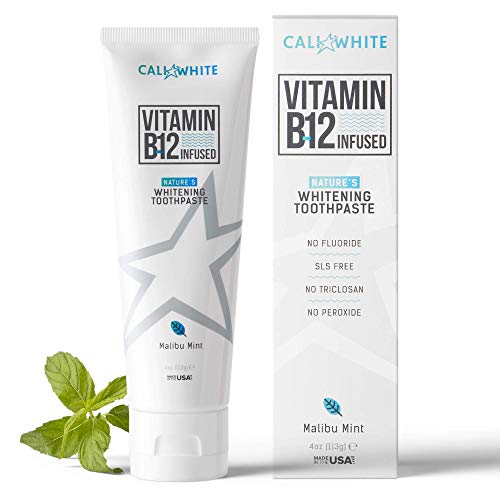How to Choose the Toothpaste
Good oral hygiene is essential for a healthy and beautiful smile. Toothpaste is a vital part of this routine, and it can help remove plaque, protect teeth from decay, and freshen breath. In the makets, there are variety of toothpaste options to available. How to choose the best toothpaste for you? Today, I’m Jane Smith from best2buy.reviews will help you to choose
- 1. What’s toothpase?
- 2. Some key points about toothpaste
- 2.1. Ingredients of toothpaste
- 2.2. Flavors of toothpaste
- 2.3. Types of toothpaste
- 2.3.1. Fluoride toothpaste
- 2.3.2. Tartar control toothpaste
- 2.3.3. Whitening toothpaste
- 2.3.4. Sensitivity toothpaste
- 2.3.5. Herbal or natural toothpaste
- 2.3.6. Children's toothpaste
- 2.3.7. Gum care toothpaste
- 2.3.8. Dry mouth toothpaste
- 3. How to choose toothpase?
- 4. In summary
What’s toothpase?
Toothpaste is a gel or paste substance used in conjunction with a toothbrush for cleaning and maintaining oral hygiene. It is typically applied to a toothbrush and used to brush the teeth and gums. Toothpaste helps remove dental plaque, food particles, and surface stains from the teeth, leaving them clean and fresh.
Some key points about toothpaste
Here are some key points about toothpaste:
Ingredients of toothpaste
Toothpaste contains a combination of active and inactive ingredients. Common active ingredients include fluoride, which helps prevent tooth decay, and antimicrobial agents like triclosan or essential oils that help reduce bacteria in the mouth. Inactive ingredients often include abrasives to help remove stains and food particles, humectants to retain moisture, thickening agents, flavoring agents, and preservatives.
Flavors of toothpaste
Toothpaste comes in a variety of flavors to make the brushing experience more enjoyable and refreshing. Here are some common flavors of toothpaste:
Mint
Mint is one of the most popular flavors of toothpaste. It provides a fresh and cooling sensation in the mouth, leaving a clean and invigorating feeling after brushing. Variations of mint flavors include spearmint, peppermint, and wintergreen.
Fruit
Fruit-flavored toothpaste is also quite popular, especially among children. Common fruit flavors include strawberry, orange, apple, watermelon, and bubblegum. These flavors can make brushing more fun for kids and those who prefer a sweeter taste.
Cinnamon
Cinnamon-flavored toothpaste offers a warm and slightly spicy taste. It provides a unique and refreshing alternative to mint flavors.
Herbal
Some toothpaste brands offer herbal-flavored options that incorporate natural ingredients like eucalyptus, tea tree oil, or herbal extracts. These toothpastes are often marketed as providing a more natural and soothing brushing experience.
Anise
Anise-flavored toothpaste has a distinct licorice-like taste. It provides a refreshing and aromatic flavor profile.
Bubblegum
Bubblegum-flavored toothpaste is specifically designed to appeal to children. It offers a sweet and familiar taste that encourages kids to brush regularly.
Whitening Variants
Some whitening toothpastes may have additional flavors to enhance the user experience. These flavors can vary, but they often have a minty or refreshing taste.
It's important to note that while flavor is a personal preference, the effectiveness of the toothpaste in maintaining oral hygiene and preventing dental issues is the most important factor. Additionally, it's essential to choose toothpaste with appropriate ingredients and recommended by dental professionals.These flavors help freshen breath and make brushing more enjoyable for many people.
Types of toothpaste
There are several types of toothpaste available on the market, each designed to cater to specific oral health needs. Here are some common types of toothpaste:
Fluoride toothpaste
This is the most widely used type of toothpaste. Fluoride helps prevent tooth decay and strengthens tooth enamel. Regular use of fluoride toothpaste is recommended for maintaining good oral health and preventing cavities.
Tartar control toothpaste
Tartar control toothpaste contains ingredients such as pyrophosphates or zinc citrate that help prevent the formation of tartar. Tartar, or dental calculus, is hardened plaque that can lead to gum disease. This type of toothpaste can help keep teeth cleaner and reduce tartar buildup, but it cannot remove existing tartar.
Whitening toothpaste
Whitening toothpaste is formulated to remove surface stains and restore the natural whiteness of teeth. They often contain mild abrasives or chemicals like hydrogen peroxide. However, it's important to note that these toothpastes may not drastically change the color of deeply stained teeth.
Sensitivity toothpaste
If you have sensitive teeth, sensitivity toothpaste can help alleviate discomfort. These toothpastes usually contain ingredients like potassium nitrate or strontium chloride that help reduce tooth sensitivity to hot, cold, or sweet stimuli.
Herbal or natural toothpaste
Herbal or natural toothpaste is marketed as a more environmentally friendly or natural alternative to conventional toothpaste. These toothpastes may contain herbal extracts, essential oils, or other natural ingredients. However, it's important to note that not all natural toothpastes contain fluoride, so check the label if fluoride is important to you.
Children's toothpaste
Toothpaste specifically designed for children typically has lower fluoride concentrations to minimize the risk of fluorosis. They often come in fun flavors and packaging to make brushing more appealing to kids.
Gum care toothpaste
Gum care toothpaste is formulated to promote gum health and reduce the risk of gum disease. These toothpastes often contain antibacterial agents or ingredients that help soothe inflamed gums.
Dry mouth toothpaste
Dry mouth toothpaste is designed for individuals who suffer from reduced salivary flow. These toothpastes aim to hydrate the mouth and provide relief from dryness and discomfort.
It's important to choose toothpaste based on your specific oral health needs and consult with your dentist for personalized recommendations. Additionally, remember to follow proper brushing techniques and maintain regular dental check-ups for optimal oral health.It's worth noting that regular and proper brushing technique, along with regular visits to the dentist, are essential for maintaining good oral hygiene. Dentists can provide personalized recommendations on toothpaste based on individual oral health needs.
How to choose toothpase?
Choosing the right toothpaste can depend on various factors, including your oral health needs, personal preferences, and any specific concerns you may have. Here are some factors to consider when selecting toothpaste:
Check for fluoride
Fluoride is a crucial ingredient in toothpaste as it helps prevent tooth decay and strengthens tooth enamel. Look for toothpaste that contains fluoride unless otherwise advised by your dentist.
Consider your oral health needs
Different toothpaste formulations cater to specific oral health needs. If you have sensitive teeth, look for toothpaste designed for sensitive teeth. If you're prone to cavities, consider toothpaste with cavity-fighting properties. Tartar control toothpaste may be suitable if you're concerned about tartar buildup. Assess your specific oral health needs and choose toothpaste accordingly.
Consult your dentist
Your dentist can provide valuable guidance on selecting the most appropriate toothpaste for your oral health. They can consider factors such as your dental history, current oral health condition, and any specific concerns you may have. Seek their advice during your regular dental check-ups.
Look for the ADA seal
The American Dental Association (ADA) evaluates toothpaste and oral care products for safety and effectiveness. Look for the ADA seal on the packaging, which indicates that the toothpaste has met their standards for oral health.
Consider flavor and texture: Toothpaste comes in a variety of flavors and textures to suit personal preferences. Choose a flavor that you enjoy, as it can make brushing more enjoyable and encourage regular brushing. Popular flavors include mint, spearmint, peppermint, cinnamon, and fruit flavors.
Avoid unnecessary additives
Some toothpaste may contain unnecessary additives, such as excessive abrasives or artificial sweeteners. If you have specific sensitivities or preferences, read the ingredient list and choose a toothpaste with fewer additives.
Consider whitening options
If you're interested in toothpaste for whitening purposes, keep in mind that most whitening toothpaste can help remove surface stains but may not drastically change the color of deeply stained teeth. If you're looking for significant whitening results, you may need to explore professional teeth whitening options.
Remember, in addition to choosing the right toothpaste, it's essential to maintain proper oral hygiene practices, including reg regular brushing, flossing, and visiting your dentist for check-ups and professional cleanings.
In summary
Maintaining good oral hygiene is essential to your overall health. To do this, purchasing the right toothpaste is key. A quality toothpaste should have the right amount of fluoride, abrasives, and other ingredients to help protect your teeth and gums from plaque, bacteria, and food particles. Additionally, it should have a pleasant taste and a refreshing feeling. When shopping for toothpaste, consider the active ingredients, as well as the flavor and texture. best2buy.reviews listed top toothpaste which apreciate in Amazon. This evaluation is basing on user and expert. We believe that it will make you feel satified and save time for you.










